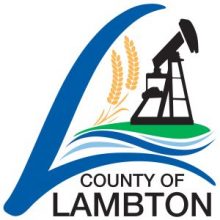By David Rockne Corrigan – Originally published on Nov 08, 2019 on tvo.org

Since 2016, Leeds Grenville has offered support for those who need a vehicle to get to work — and data shows that household earnings are rising.
In rural Ontario, access to a personal vehicle can dramatically affect quality of life. Alison Tutak, director of community and social services for the United Counties of Leeds and Grenville, sees it first-hand every day. “We take transportation for granted,” she says. “In Ottawa or Toronto, you can take the bus or subway. But in North Augusta, what do you do if your child is sick at school? How do you pick them up? How do you get groceries? How do you do anything in a rural area without a car?”
Tutak says that even in Brockville, where her office is located, the transit system can often add an extra hour or two to a daily commute — time that could be spent working or at school.
Enter Wheels, a municipal pilot program through which interest-free car loans of up to $7,000 are provided to Ontario Works recipients who require a vehicle to get to work. First launched in 2016, the pilot was originally designed such that applicants received money from the counties but then secured their own financing through a local car dealership. When it became clear that interest rates were going to be an obstacle for potential participants, Leeds Grenville modified the program in July 2018, taking on the role of lender. In October 2019, the municipality doubled its $50,000 investment.
Early returns have been encouraging. Since 2018, the average monthly household earnings of participants have increased from $988.50 to $1649.33 — a 60 per cent jump. Some participants have left social assistance altogether, and all of them have reduced their entitlement.
Applicants to the program meet with a financial counsellor who assesses their ability to repay the loan. Tutak says all participants are currently in good standing, though one was briefly in arrears (a case manager and credit counsellor helped them get “back on track,” she explains). Tutak says that, in an ideal world where everyone makes their payments on time, the funds will be self-replenishing: “Hopefully we can just keep funding more and more cars.”
Due to privacy concerns, participants in the program can’t be identified — but an October report to Leeds Grenville’s joint-services committee described how Wheels had helped a single mother and her two adult sons. She bought a car after receiving a loan last winter; since then, she and her sons have seen “sustained and increased” employment. All three share the car to get to work and school. One of the sons left social assistance earlier this year; the mother and brother followed suit in September.
“It’s a win-win-win, really,” says Norman Ragetlie, executive director of the Rural Ontario Institute, an organization whose goal is to champion the province’s rural and northern communities. “It’s a win for taxpayers: people who once needed support maybe won’t need so much. It’s a win for local auto dealers, selling more cars. And, most importantly, it’s a win for these families that need transportation. It’s a sweet kind of solution.”
Ragetlie says transportation has long been identified as a major barrier to employment and education for rural Ontarians. Experts agree. “It’s been established, empirically, that people with better physical access to jobs have higher potential to earn money,” says Ajay Agarwal, an associate professor in Queen’s University’s department of geography and planning. In most cities, Agarwal explains, jobs are increasingly located in places accessible only by car.
“Even in Kingston, you see more commercial growth happening in the east and west ends of the city — new business parks, shopping malls. These places are very easy to reach by car. But if you rely on public transit, it could take you 90 minutes or two hours to get to work,” he says.
In rural areas, the problem is even worse, as residents often don’t have a way of getting to the nearest city in the first place. “If you live in a public transportation desert, and you don’t have your own car, you really don’t have any access to work. Access to a vehicle is their lifeline,” Agarwal says.
One of the inspirations for Wheels was Circles, a program first developed in the United States in the 1990s then brought to Canada in 2008 (it now has 10 chapters across Ontario). It creates partnerships between impoverished people — called “leaders” — and middle-class “allies” in order to help families transition out of poverty. In Lambton County, Circles Canada has been running a micro-loan program similar to Wheels for almost a decade.
“In Sarnia, it might sometimes take you two buses to get to work or school. This is a barrier for folks trying to manage their day,” says Kim Godin, Circles’ national coordinator. “For people living in poverty, that is a stress. That’s why these programs are significant — life-changing, actually.”
Back in Brockville, Tutak acknowledges that helping “six or seven” households in Leeds Grenville makes “just a dent” in the broader transportation challenges that rural Ontarians face.
“This is just the beginning,” she says. “I think it’s too early to shout from the rooftops that this is the perfect program. I don’t think we have enough time under our belt yet to know if this is a good long-term policy. But, so far, we’re very excited.”

